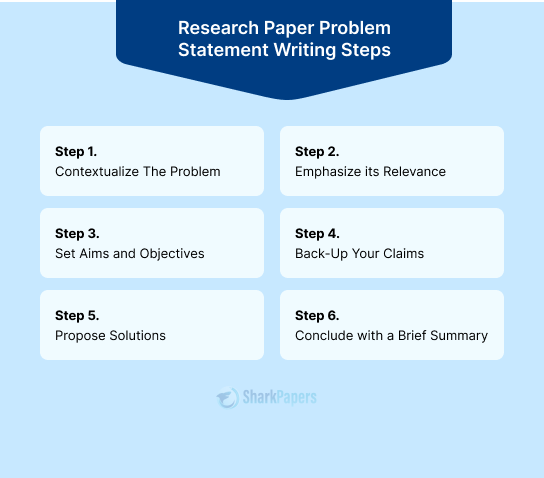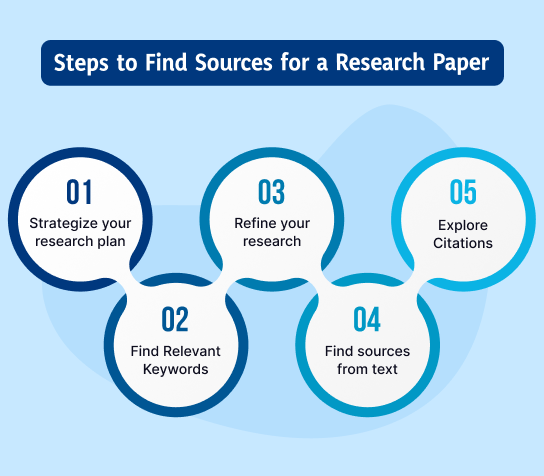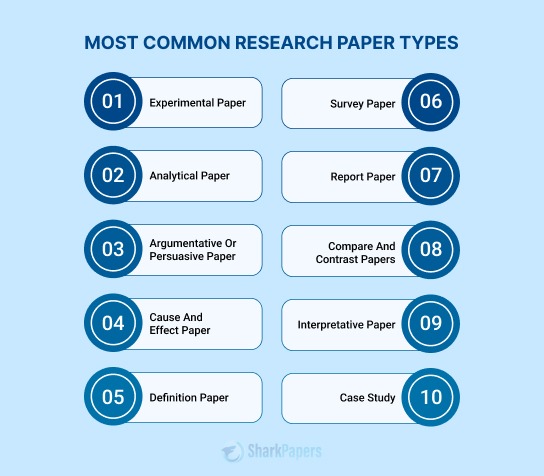What is A Survey Research Paper?
According to the definition by (Check & Schutt, 2012, p. 160), survey research can be defined as:
“The collection of information from a sample of individuals through their responses to questions.”
Coming to a survey research paper, we can define it as: An academic document that presents information gathered from surveys or questionnaires. It employs survey research and analyzes the responses to draw conclusions or make observations.
The purpose of a survey research paper is to inform readers about the opinions, attitudes, or behaviors of a particular group of people regarding the topic being studied.
Types of Surveys Used in Research Papers
Different survey types are employed in research papers. Each has its distinct way of gathering information from participants. Here are the major survey research designs:
Descriptive Surveys: These surveys aim to describe the characteristics of a population or phenomenon. You'll often find them used to gather baseline data or to provide a snapshot of a particular situation.
Analytical Surveys: In these surveys, you not only describe the phenomenon but also analyze the relationships between different variables. This type of survey goes beyond mere description and looks into understanding why certain patterns exist.
Longitudinal Surveys: Longitudinal surveys are conducted over an extended period, often to track changes or trends within a population over time. They're valuable for studying developments and shifts in attitudes, behaviors, or conditions.
Cross-Sectional Surveys: Unlike longitudinal surveys, cross-sectional surveys are conducted at a single point in time. They provide a snapshot of a population at that particular moment, offering insights into the influence of certain characteristics or beliefs.
Correlational Surveys: Correlational surveys explore the relationships between different variables within a population. They seek to determine whether changes in one variable correspond to changes in another, without necessarily implying causation.
Exploratory Surveys: This type of survey is used to gain a general understanding of a topic or issue. They’re often used in the early stages of research, when the researcher is unsure what they are looking for. They may use open-ended questions to allow respondents to share their thoughts and experiences freely.
Explanatory research: This survey type is used to investigate relationships and connections between different variables. Explanatory surveys may use a combination of open-ended and closed-ended questions.
Experimental Surveys: These surveys manipulate certain variables to observe their effects on others. In experimental surveys, researchers establish causal connections between variables. This gives the researchers valuable insights into the underlying causes and effects.
Panel surveys: This type of survey is a specific type of longitudinal survey in which the same group of people is surveyed multiple times. Panel surveys are often used to track changes in attitudes, opinions, or behaviors over time.
Parts of a Survey Research Paper
Much like any other type of research paper, a survey paper has the following primary parts:
Survey Research Paper Format
To make sure your paper is structured correctly and follows a logical format, follow this survey research paper outline:
- Introduction: You should start by giving an overview of the research topic, your research questions, objectives, and explain why your study is important.
- Literature Review: You need to summarize existing research related to your topic, pointing out any gaps that your study will address.
- Methodology: Describe the survey design, including how you selected participants, recruited them, and collected data using specific instruments such as questionnaires.
- Results: Present the findings of your survey analysis, using tables and graphs to help you illustrate your key points.
- Discussion: Interpret your results in relation to your research questions, compare them with existing literature, and discuss what they mean for theory or practice. Don't forget to address any limitations in your study.
- Conclusion: Summarize your main findings in the conclusion section. Restate why your study is important, and suggest areas for further research based on your results.
- References: List all the sources you cited in your paper using the appropriate citation style.
- Appendices: Include any additional materials like your survey questionnaire or extra data analysis details here.
Follow the above outline to write a comprehensive survey research paper. Just make sure that your paper follows a logical flow and that each section naturally leads to the next one.
You can use the APA paper format for the manuscript formatting. Our guide on APA research paper format contains the complete paper formatting guidelines according to APA style.
The following section will help you understand the writing process for survey research papers with a step-by-step approach. Read on.
How To Write A Survey Research Paper
Writing a survey paper demands you to follow a step-by-step approach to ensure a well-structured and informative research paper.
Here is the survey research paper writing process broken down into key steps:
Step 1. Choose a Topic
The first step pick a research topic that's relevant, interesting, and doable. Think about what's trending, and what gaps exist in current research. Also, think about what you're passionate about or knowledgeable about.
Your selected topic should have a good amount of literature review available. This will help you in writing a more comprehensive survey research paper.
Step 2. Define Your Research Objectives
The next step is to clearly outline the purpose of your survey and the specific research questions you aim to answer. In this step, you should consider the goals of your study and what you hope to achieve by conducting the survey.
Step 3. Conduct a Thorough Literature Review
In this step, explore existing research on your topic to identify gaps in knowledge and inform your survey design. You should analyze relevant studies, theories, and methodologies to gain a comprehensive understanding of the current state of research in your field.
Step 4. Design Your Survey
Develop a comprehensive survey instrument, including well-crafted questions that align with your research objectives. Depending on the nature of your research, you can choose from different survey designs such as descriptive, analytical, experimental, etc.
Just make sure that your choice of words, flow of questions, and format are clear and understandable by the participant.
Step 5. Choose Your Sampling Method
figure out the appropriate sampling technique to ensure your sample represents the population of interest. Whether you’re using probability or non-probability sampling methods, make sure your sample size is sufficient for a noteworthy analysis.
Step 6. Collect Data
When conducting your survey, make sure to keep the data collection process consistent and clear. Choose methods like online surveys, phone interviews, or in-person interviews based on who you're trying to reach and the resources available.
Step 7. Analyze Your Data
In this step, analyze your survey results using statistical methods or qualitative techniques to interpret your survey results, and draw meaningful conclusions. Organize your data systematically and look for patterns, trends, and relationships between different factors.
Step 8. Interpret and Discuss Findings
Discuss the implications of your findings in relation to existing literature. Don’t forget to address any limitations or potential biases in your study. Think about how important your results are and how they add to what we know about your research topic.
Step 9. Write Your Paper
Now it's time for you to put your findings into words. Start by organizing your thoughts and structuring your paper. You should begin with an introduction that introduces your research topic and objectives. Then, in the literature review section, you'll summarize existing research and highlight any gaps you're addressing.
Describe your methodology in detail, explaining how you conducted your survey. Present your results clearly and concisely, and then discuss what they mean in the context of your research questions.
Finally, conclude your survey paper by summarizing your findings and suggesting areas for future research.
Step 10. Revise and Edit
The final step is to carefully review and edit research papers for clarity, coherence, and accuracy. Make revisions as needed to enhance the overall quality of your work. Always seek advice from your coworkers or instructors to sharpen your writing.
How To Write Survey Questions For Research
When writing survey questions for your research, it's essential that you capture accurate and valuable data. Start by clarifying the objectives of your study and the specific information you need to gather. Then, consider the following tips as you craft your questions:
- Know Your Audience: Tailor questions to your respondents' demographics, interests, and knowledge levels so you can better engage them.
- Be Clear and Brief: Use simple language to avoid confusion and keep questions concise. This will guarantee that you're getting the most accurate responses from participants like you.
- Avoid Bias: Phrase questions neutrally to prevent influencing your responses, allowing you to gather unbiased data.
- Use Closed and Open Questions: Mix multiple choice with open-ended questions for both quantitative and qualitative insights. This will give you a well-rounded view of the topic.
- Ensure Exhaustive and Exclusive Options: Provide all possible response choices without overlap. This ensures that you gain a comprehensive understanding of participants' perspectives.
- Consider Question Order: Arrange questions logically to maintain survey flow and keep you engaged throughout the process.
- Pilot Test Your Questions: Test questions with a small sample to refine clarity and relevance. This will help you verify that you're asking the right questions in the right way.
- Review and Revise: Remember, crafting effective survey questions is an iterative process. Consider whether they align with your research objectives and if they're clear and concise.
Follow these guidelines to create effective survey questions for your research, ensuring that you gather the most valuable and insightful data possible.
Survey Research Paper Topics
Having a handful of research ideas at your hand is always beneficial if you’re struggling with narrowing down your paper topic. That’s why we have compiled a list of survey research paper topics that may interest you.
- Analyze the relationship between smartphone use and adolescent sleep patterns
- Investigate the correlation between parental involvement and student academic performance
- Explore the effectiveness of mindfulness techniques in reducing college student stress
- Assess public acceptance of autonomous vehicle technology and concerns
- Examine the impact of remote work on work-life balance perceptions
- Study consumer preferences and motivations for sustainable packaging
- Evaluate the association between social media usage and mental health outcomes
- Investigate gender-based differences in leadership styles in professional settings
- Measure public confidence in governmental institutions over time
- Assess student satisfaction and performance in online learning environments
Survey Research Paper Examples
To gain a complete and practical understanding of survey research papers, you should take a look at some examples. Here are some survey research paper samples:
Here are some more examples of survey papers examining different topics.
- Transportation Survey Research Paper
- Fish Market Survey Research Paper
- Customer Satisfaction Survey Research Paper
- Socio-Economic Survey Research Paper
To wrap things up,
In this guide, you've learned how to write a survey research paper. We talked about what surveys are and how they work. Then, we looked at different types of surveys, such as descriptive, cross-sectional, and more. We also helped you understand the writing process for your next survey paper.
Now, with tips on writing clear questions and some ideas for topics, you should be ready to write a good survey paper. However, if professional assistance is what you’re looking for, we’re up for the service.
Our paper writer service will help you write surveys or any other type of research papers at affordable rates. We can handle complex tasks without breaking a sweat.
Just reach out to our research paper writing service, fill out our simple order form with details about your academic needs, and let us handle the rest!



















)

































-12114.jpg)













 Not seeing it? Check Promotions or Spam — inboxes get protective.
Not seeing it? Check Promotions or Spam — inboxes get protective.